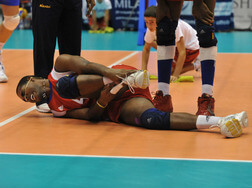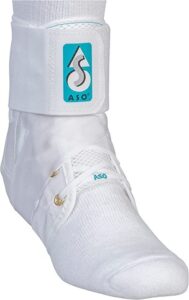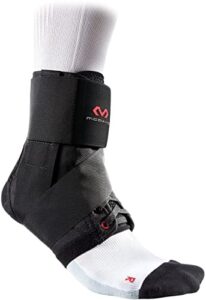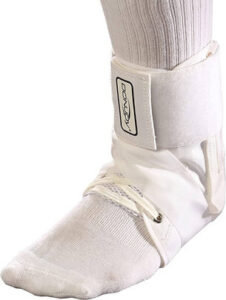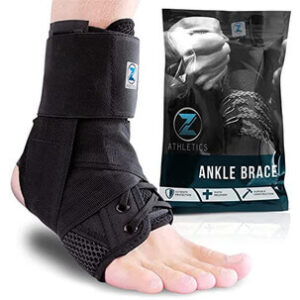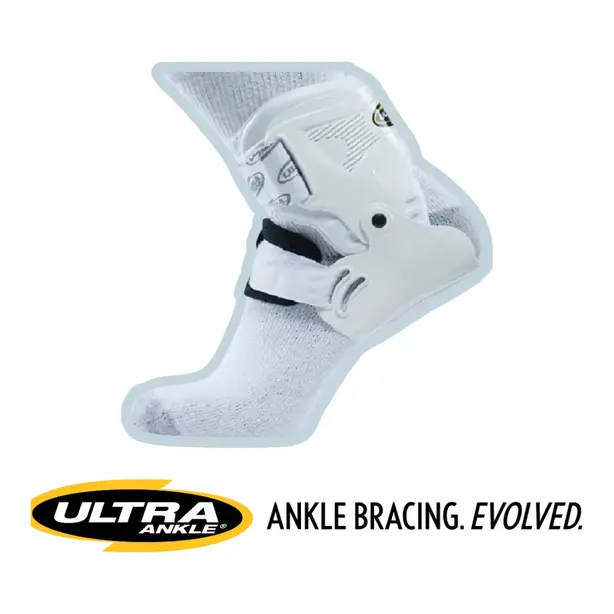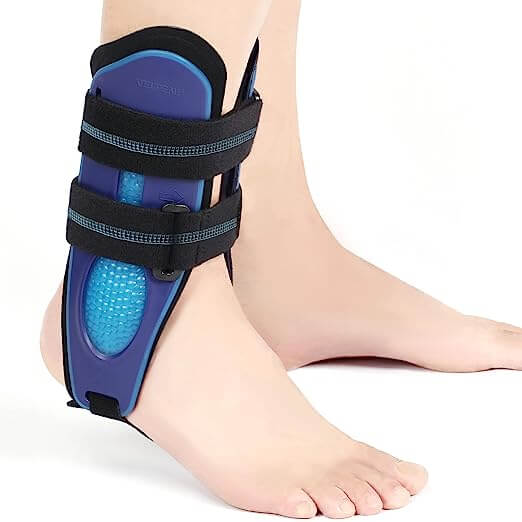Volleyball is an exhilarating and dynamic sport that requires agility, quick movements, and jumping. However, these intense actions also pose a risk of ankle injuries, which can hinder a player’s performance and sideline them from the game. To mitigate this risk, many volleyball players turn to ankle braces. In this blog post, we will explore the benefits of ankle braces in volleyball and how they can help enhance your game on the court.
5 Best Deals of Volleyball Ankle Braces
1. Med Spec ASO Ankle Stabilizer
The Med Spec ASO Ankle Stabilizer is a must-buy for volleyball players looking for top-tier ankle protection at a great price. Engineered with Nylon Stabilizing Straps in a figure-eight design, this brace reinforces and secures your ankle, reducing the risk of injuries during intense matches. The woven elastic cuff closure locks in the laces and straps for extra stability, while the CoolFlex Achilles pad and tongue provide a breathable, comfortable fit for all-day wear.
🔥 Why Choose Med Spec ASO? 🔥
✅ Exclusive Deals – Get premium ankle support at an affordable price.
✅ Figure-Eight Stability – Nylon straps protect & reinforce your ankle.
✅ Breathable & Comfortable – CoolFlex padding prevents discomfort.
✅ Durable Nylon Boot – Built to last through tough volleyball action.
✅ Versatile & Low-Profile Design – Fits either foot and works with any shoe.
⚠️ Each brace is sold separately and intended for single-patient use only.
2. McDavid Ankle Brace
The McDavid Ankle Brace is a must-buy for volleyball players looking for premium ankle support at a great price. Designed to prevent injuries and aid recovery, this brace features a figure-6 strapping pattern, offering the same stability as athletic tape—without the hassle! The ventilated tongue keeps your foot cool and comfortable, even during intense matches, while the adjustable top strap allows for quick, easy compression without unlacing your shoe.
🔥 Why Choose McDavid? 🔥
✅ Unbeatable Deals – Get professional-grade ankle support at an affordable price.
✅ Figure-6 Strapping – Mimics athletic tape for superior stability.
✅ Breathable & Comfortable – Ventilated tongue keeps feet cool and dry.
✅ Versatile Fit – Works for both left and right feet.
✅ Trusted by Athletes – Game-changing design for protection, performance, and recovery.
⚠️ For the best fit, if you’re at the upper size range, size up for extra comfort.
3. DonJoy Stabilizing Pro Ankle Support Brace
The DonJoy Stabilizing Pro Ankle Support Brace is a must-buy for volleyball players seeking lightweight, durable ankle protection at a great price. Designed with 800D ballistic nylon and a reinforced eyelet area, this brace delivers exceptional support and stability while fitting seamlessly inside any shoe. The full circumferential elastic strap ensures a secure fit while providing extra compression to reduce the risk of injuries during intense play.
🔥 Why Choose DonJoy? 🔥
✅ Exclusive Deals – Get professional ankle support at an affordable price.
✅ Ultra-Durable & Lightweight – 800D ballistic nylon withstands tough volleyball action.
✅ Enhanced Stability – Elastic strap & reinforced stays offer maximum support.
✅ Proprioceptive Support – Improves balance, agility, and body awareness.
✅ Universal Fit – Works for both left and right feet.
4. Z ATHLETICS Zenith Ankle Brace
The Z ATHLETICS Ankle Brace is a must-buy for volleyball players seeking durable, high-performance ankle support at a great price. Made from premium nylon and neoprene, this brace delivers optimal stability, breathability, and comfort, allowing athletes to perform at their best without restrictions. Featuring double-stitched seams, it’s built to last through intense play, saving you money on frequent replacements.
🔥 Why Choose Z ATHLETICS? 🔥
✅ Best Deals – Get top-tier ankle protection at an affordable price.
✅ Superior Injury Prevention & Recovery – Reduces pain from sprains, tendonitis, and acute injuries.
✅ Adjustable & Customizable Fit – Lace-up front & side straps provide secure, personalized support.
✅ Enhanced Stability Without Sacrificing Mobility – Contoured side straps keep your ankle secure yet flexible.
✅ Multi-Sport Versatility – Perfect for volleyball, basketball, running, hiking, wrestling, and soccer.
⚠️ Proper fit is essential for maximum support and injury prevention—make sure to choose the right size!
5. SNEINO Ankle Brace
The SNEINO Ankle Brace is a must-buy for volleyball players looking for customizable ankle support at an affordable price. Designed for recovery and injury prevention, this brace offers versatile wear options—simply adjust the elastic band for double support or wear it normally for everyday comfort. Whether you’re recovering from sprains, Achilles tendinitis, or ligament injuries, the high-quality fabric ensures breathability, moisture absorption, and all-day comfort.
🔥 Why Choose SNEINO? 🔥
✅ Best Deals – Get premium ankle protection at an affordable price.
✅ Customizable Support – Adjust the elastic band for extra pressure or normal comfort.
✅ Promotes Recovery & Protection – Aids in healing sprains, tendonitis, and ligament injuries.
✅ Breathable & Comfortable – Moisture-wicking fabric keeps your ankle dry and relaxed.
✅ Versatile Fit for All – Ideal for men, women, athletes, and even kids.
✅ Multi-Sport Use – Perfect for volleyball, basketball, running, hiking, and more.
Benefits of Ankle Braces in Volleyball
- Protection and Stability: Ankle braces are designed to provide additional support and stability to the ankle joint, reducing the risk of sprains, strains, and other common volleyball-related injuries. The braces typically feature a sturdy construction with straps and laces that secure the ankle, limiting excessive movements and preventing the ankle from rolling or twisting during quick changes in direction. By offering this protective layer, ankle braces allow players to focus on their performance without worrying about potential injuries.
- Injury Prevention: One of the primary reasons volleyball players wear ankle braces is to prevent injuries. Volleyball involves constant jumping, landing, and lateral movements, which can put significant stress on the ankles. Ankle braces help to minimize the impact of these movements and provide added support to the ankle joint, reducing the chances of ligament tears, sprains, or other traumatic injuries. By preventing injuries, players can maintain their consistency on the court and avoid extended periods of recovery.
- Increased Confidence: Ankle braces not only physically support the ankle but also provide players with a psychological boost. Knowing that their ankles are well protected, players can play more confidently, push themselves harder, and take risks without the fear of injuring themselves. The sense of security offered by ankle braces allows players to focus on their game and perform at their best, leading to improved overall performance and a competitive edge.
- Quick Recovery and Rehabilitation: In case an injury does occur despite the preventive measures, ankle braces can assist in the recovery process. By immobilizing the ankle and providing compression, they promote healing by reducing swelling and inflammation. Ankle braces can also be used during rehabilitation exercises to stabilize the ankle joint, allowing players to regain strength, flexibility, and range of motion. These braces are often recommended by medical professionals to aid in the recovery from ankle injuries and ensure a safe return to the volleyball court.
- Customization and Comfort: Ankle braces come in various designs, sizes, and materials to suit individual needs. Players can choose between lace-up braces, wrap-around braces, or rigid braces based on their preference and the level of support required. Many modern ankle braces are also lightweight, breathable, and moisture-wicking, ensuring comfort during long and intense matches. It is crucial to select ankle braces that fit properly and provide adequate support without causing discomfort or restricting movement.
When to Use Volleyball Ankle Brace?
Volleyball ankle braces are beneficial accessories that can help protect and support your ankles while playing the sport. Knowing when to use ankle braces is essential to maximize their effectiveness. Here are some scenarios in which it is recommended to wear volleyball ankle braces:
- During Training and Practice: Wearing ankle braces during training sessions and practice games can provide added protection and support to your ankles. Even though the intensity may be lower than in competitive matches, these activities still involve repetitive movements and potential risks for ankle injuries. By wearing ankle braces consistently during training, you can reduce the chances of sprains or strains and build confidence in your ankle stability.
- Competitive Matches: Competitive volleyball matches often involve high-intensity movements, including quick changes in direction, jumps, and landings. These actions put significant stress on your ankles, making them susceptible to injuries. Ankle braces should be worn during matches to provide extra support, stability, and protection for your ankles. The braces can help minimize the risk of ankle rolls or twists, allowing you to focus on your performance and play with confidence.
- After Recovering from an Ankle Injury: If you have recently recovered from an ankle injury or ankle surgery, it is advisable to continue wearing ankle braces during your return to play. Ankle braces can provide additional support to the healing ligaments and muscles, reducing the risk of reinjury. They offer stability to the weakened ankle and can assist in gradually rebuilding strength and confidence. Consult with a healthcare professional to determine when it is appropriate to start using ankle braces after an injury.
- Ankle Instability or Weakness: Some individuals naturally have weaker ankles or a history of ankle sprains. In such cases, wearing ankle braces during volleyball activities is highly recommended. Ankle braces can help compensate for the lack of stability and provide the necessary support to prevent injuries. By consistently wearing ankle braces, players with chronic ankle instability can reduce the likelihood of reinjury and improve their overall performance.
- Following Rehabilitation Exercises: During the rehabilitation phase after an ankle injury, ankle braces are often used as part of the recovery process. They can be worn while performing specific exercises prescribed by a healthcare professional to strengthen the ankle and regain stability. Ankle braces provide external support, limit excessive movement, and promote proper alignment during rehabilitation exercises.
Importance of Ankle Support in Volleyball
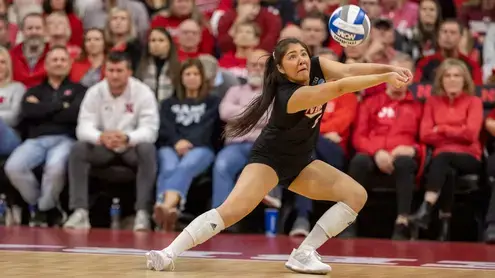
Ankle support is crucial in volleyball for several reasons. Firstly, ankle braces offer added protection and stability to injured ankles by immobilizing the joint and preventing excessive movement, thus reducing the risk of further damage or aggravation. Additionally, the compression provided by ankle braces helps control swelling and inflammation, promoting better blood circulation and facilitating the removal of excess fluid, resulting in a more comfortable recovery process.
Moreover, ankle braces aid in the healing process by providing support to injured ligaments, tendons, or muscles, stabilizing the ankle joint, and reducing stress on the injured structures. This support encourages proper alignment, minimizing the formation of scar tissue and improving overall recovery outcomes. During the rehabilitation phase, ankle braces serve as external support for the healing ankle, assisting in maintaining proper alignment during exercises and preventing sudden movements that could lead to reinjury.
This not only enhances physical recovery but also provides a psychological boost, instilling confidence in the injured athlete. Lastly, ankle braces facilitate a safe and gradual return to volleyball activities by offering protection and support, reducing the risk of reinjury as activity levels increase. They restore stability and allow athletes to regain confidence in their ankle, enabling them to resume playing with reduced fear of aggravating the injury.
Most Common Ankle Injuries in Volleyball
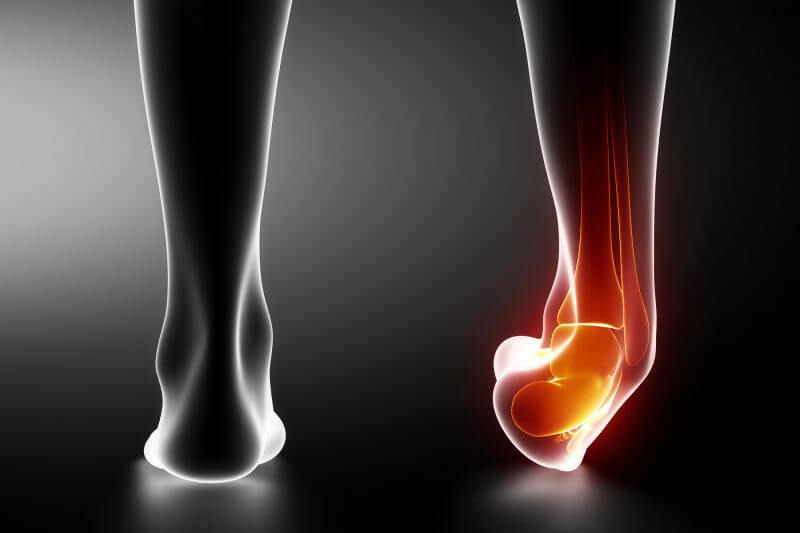
In volleyball, the most common ankle injuries typically include sprains and strains. Ankle sprains occur when the ligaments that support the ankle are stretched or torn, often due to a sudden twist or rolling of the foot. These sprains can range from mild to severe, with varying degrees of pain, swelling, and instability.
Additionally, ankle strains can occur when the muscles or tendons around the ankle are overextended or torn, resulting in pain, inflammation, and limited range of motion. Both sprains and strains can significantly impact a volleyball player’s performance and may require proper treatment and rehabilitation for a safe and timely return to the game.
Volleyball Ankle Sprain Injury
Causes:
- Landing on another player’s foot: This often happens during intense rallies when players are focused on the ball and may not notice their surroundings. Stepping on an opponent’s or teammate’s foot can cause the ankle to roll outward, resulting in a sprain.
- Quick lateral movements: The side-to-side nature of volleyball requires players to make rapid lateral movements, increasing the risk of rolling an ankle if they land awkwardly or twist their foot.
- Jumping: Volleyball players frequently jump to spike the ball or block shots. The impact when landing can strain the ankle ligaments, making them susceptible to injury.
Symptoms:
- Pain: Ankle sprains are typically accompanied by immediate pain, which can range from mild discomfort to severe agony.
- Swelling: The injured area may become swollen, as the body responds to the trauma by increasing blood flow to the affected region.
- Bruising: Discoloration or bruising may occur due to damage to blood vessels around the ankle.
- Difficulty moving the ankle: Ankle mobility may be restricted, and players may find it challenging to bear weight on the affected foot.
Treatment:
- R.I.C.E. Protocol: Rest, ice, compression, and elevation are the first steps in treating an ankle sprain. Resting the ankle allows it to heal, ice helps reduce swelling, compression with an elastic bandage supports the injured area, and elevation minimizes swelling.
- Physical Therapy: A physical therapist can guide the player through exercises to restore strength, flexibility, and range of motion in the ankle.
- Bracing or Taping: Wearing a brace or taping the ankle can provide additional support while it heals.
Prevention:
- Proper Footwear: Wearing shoes with good ankle support can reduce the risk of sprains.
- Ankle Strengthening Exercises: Regularly working on ankle strength and stability through exercises can make the joint more resilient.
- Warm-Up and Cool-Down: A thorough warm-up and cool-down routine helps prepare the body for physical activity and aids in recovery.
Volleyball Ankle Strain Injury
Causes:
- Overexertion: Volleyball involves a lot of jumping and rapid changes in direction. Overuse or pushing oneself too hard can strain the ankle muscles and tendons.
- Sudden Movements: Quick lateral movements or abrupt stops and starts can strain the ankle if not executed with proper technique.
- Uneven Playing Surface: Playing on an uneven or slippery court surface can lead to ankle strains if a player loses footing.
Symptoms:
- Pain: Ankle strain is often characterized by pain, which can range from mild discomfort to sharp, severe pain depending on the extent of the strain.
- Stiffness: Ankle strains can result in decreased range of motion, making it challenging to move the joint.
- Weakness: Players may feel a lack of strength or instability in the affected ankle.
Treatment:
- Rest: Rest is essential to allow the injured ankle to heal. Players should refrain from putting unnecessary stress on the affected joint.
- Compression: Wrapping the ankle with an ankle brace can provide support and reduce swelling.
- Elevation: Elevating the injured ankle above heart level can also help minimize swelling.
Prevention:
- Proper Warm-up and Cool-down: A thorough warm-up routine, including dynamic stretching and exercises to prepare the ankles for activity, is crucial. Cool-down exercises help with recovery.
- Footwear: Choosing appropriate volleyball shoes that provide ankle support and grip is essential.
- Strength and Conditioning: Regular strength training exercises, especially those targeting the ankle and lower leg muscles, can enhance stability and reduce the risk of strain.
FAQ
- What are volleyball ankle braces? Volleyball ankle braces are specialized supportive devices designed to provide stability and protection to the ankle joint during volleyball activities. They typically consist of a combination of straps, laces, and rigid or semi-rigid materials that help prevent excessive ankle movements and reduce the risk of injuries such as sprains or strains.
- Who should wear volleyball ankle braces? Volleyball ankle braces can benefit players at all skill levels, from recreational players to professionals. They are particularly recommended for individuals with a history of ankle injuries, those with ankle instability, or those recovering from an ankle injury. Additionally, players looking to prevent ankle injuries or boost their confidence on the court can also benefit from wearing ankle braces.
- How do volleyball ankle braces work? Volleyball ankle braces work by providing external support to the ankle joint. They help limit excessive movement, such as inversion (rolling inward) or eversion (rolling outward), reducing the strain on the ligaments and muscles surrounding the ankle. Ankle braces also help to distribute forces more evenly across the ankle, enhancing stability and minimizing the risk of injury.
- Can ankle braces restrict movement or hinder performance? Ankle braces are designed to strike a balance between providing support and allowing freedom of movement. While they may slightly restrict certain movements, such as extreme ankle inversion or eversion, high-quality ankle braces are designed to offer a good balance between support and mobility. Properly fitting ankle braces should not significantly hinder performance but rather enhance it by reducing the risk of injury and providing added stability.
- How do I choose the right volleyball ankle brace? When choosing a volleyball ankle brace, consider factors such as the level of support required, personal comfort preferences, and any specific ankle conditions or injuries. It is essential to select ankle braces that fit snugly and provide adequate support without causing discomfort. Consulting with a healthcare professional or sports specialist can help you determine the most suitable ankle brace for your needs and ensure proper usage.

